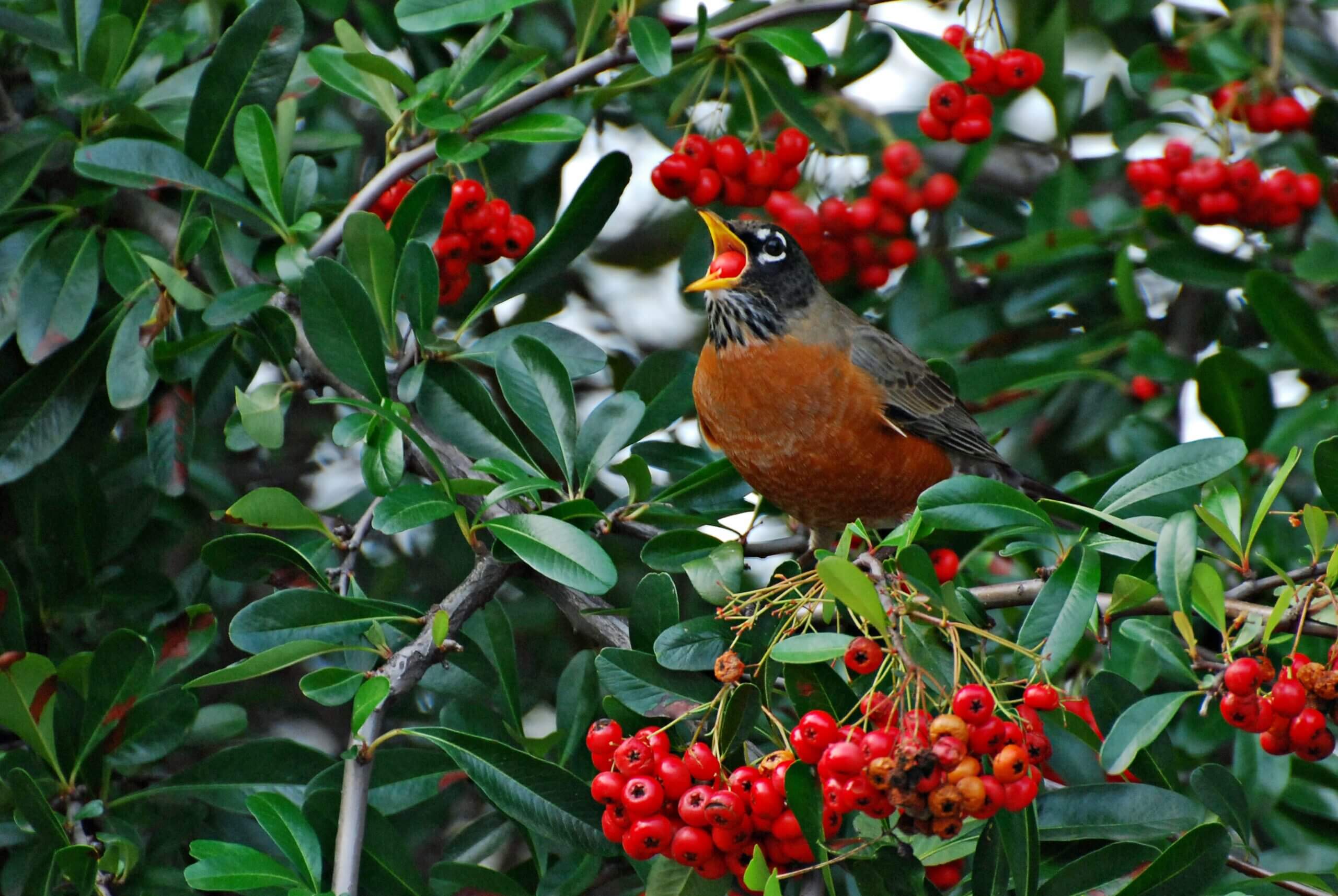All through the rainy season many birds rely on fruits as a major part of their diet. These birds often travel in flocks, like the Cedar Waxwings and American Robins. Sometimes the flocks are mixed; several different species will travel together, and all are “on the lookout” for resources.
Bright red berries are easy for birds to spot; and large quantities of fruits in one place make foraging more energy efficient. Red Toyon berries (Heteromeles arbutifolia) certainly attract the attention of hungry birds, but so do other red berries such as Cotoneaster and Pyracantha.
Birds will partake of all the edible fruits they find, and therein lies the problem! The fruits are eaten at one location, say your backyard, but then they fly off, sometimes into open spaces, and a few hours later they excrete the seeds that were contained within the fruits. When I walk through the woods and meadows of Marin’s wild lands, I often spot seedlings of Cotoneaster; they can and do grow without cultivation, and over time could displace native shrubs and damage native ecosystems.
Bob and Mieko took these beautiful photos from December through February; Robins, Waxwings, House Finches and Mockingbirds all eating berries. The pictures tell the story! Birds just need to eat and they don’t distinguish between native and non-native sources of food energy.
And, that’s exactly why it’s up to us; as conscientious gardeners we can choose to plant the native species which provide resources for native creatures without possible adverse effects to our native environment. Toyon is a beautiful care-free shrub in any sunny location; the small white flowers in early summer attract lots of beneficial insects and butterflies, and showy red berries follow in the fall. It’s drought tolerant once established; but, does need protection from deer browsing to get established.
On February 11th I sowed Toyon seeds in 4” pots in the greenhouse, using two different pre-treatment methods. One batch of cleaned, dry, seed was soaked in cool water for one hour before sowing; germination started on February 27th and was prolific. The other batch was soaked in hot, black, coffee for 2 to 3 hours; germination was slower, starting on March 1st, and was not as prolific. True leaves are starting to form as I’m writing this blog, but we probably won’t be transplanting the seedlings until the beginning of April.
The pre-treatment a propagator uses to induce germination is all about giving the right signals to the seed coat, which functions as a sort of sensory organ. The seed coat, or testa, is all that protects the embryo within from the outside world. There’s an outer and inner layer to the seed coat, which are often impregnated by waxes or fats, and then another layer or two of thick-walled protective cells. As moisture penetrates the seed coat, cells expand, chemicals are released, and germination occurs.
